Review: 2019 Kona Operator CR - An Adaptable & Sturdy DH Machine
When Kona announced the latest version of their Operator downhill bike there was a refreshing lack of hype accompanying the news. At a time when it felt like other companies were tripping over themselves to get a 29” wheeled downhill bike onto the market, Kona quietly rolled out the new Operator, which was compatible with both 29 and 27.5” wheels.
In its 29” guise the bike has 195mm of rear travel that's paired with a 190mm RockShox BoXXer World Cup up front. The front triangle, oversized rocker link, and seatstays are all carbon, while the chainstays are aluminum. There are only two sizes – medium and large – but the reach can be adjusted by 10mm on each bike, which should help it fit a slightly wider range of rider heights.
In its 29” guise the bike has 195mm of rear travel that's paired with a 190mm RockShox BoXXer World Cup up front. The front triangle, oversized rocker link, and seatstays are all carbon, while the chainstays are aluminum. There are only two sizes – medium and large – but the reach can be adjusted by 10mm on each bike, which should help it fit a slightly wider range of rider heights.
Operator 29 CR Details
• Wheel size: 29" (27.5" compatible)
• Travel: 195mm rear / 190mm front
• Carbon frame, aluminum chainstays
• 62-degree head angle
• 425 or 440mm chainstay length
• Sizes: S, M
• Price: $5,999 USD, $3,299 USD
• Weight: 37 lb (size large, actual)
• www.konaworld.com
• Wheel size: 29" (27.5" compatible)
• Travel: 195mm rear / 190mm front
• Carbon frame, aluminum chainstays
• 62-degree head angle
• 425 or 440mm chainstay length
• Sizes: S, M
• Price: $5,999 USD, $3,299 USD
• Weight: 37 lb (size large, actual)
• www.konaworld.com
There's just one complete Operator CR model, which retails for $5,999 USD. That bike is configured as a 29er and comes with Mavic 630 rims laced to Formula hubs, a RockShox Super Deluxe Coil RC World Cup, SRAM Code R brakes, and a SRAM GX DH 7-speed drivetrain. It's worth noting that the bike pictured here has a different set of cranks than the stock configuration – those should be SRAM's aluminum Descendant DH crank.
There's also a frame-only option for $3,299 USD for riders who want to go the custom route, and Kona does still have the aluminum 27.5” Operator in their lineup.
Construction and Features
The Operator's carbon frame looks like it was built to take a serious beating, and even from a distance it's clear this isn't a spindly featherweight. Just look at that rocker link – its proportions are almost comical, and the headtube junction is heavily reinforced as well.
Fork bumpers are bolted onto each side of the headtube, where they also serve as cable guides for the externally routed rear brake line. The derailleur housing mainly lives inside the frame, other than a couple of spots where it emerges near the seatstays. One feature that seems like overkill is the addition of another bolt to make sure the pivots don't come loose. I understand the concept, but it makes it inconvenient if you want to do a bolt check, and it seems sort of like a low-budget version of the expanding collet design used by other companies.
The Operator's frame is extremely adaptable, with a wide range of possible configurations. A flip-chip on the seatstays is used to adjust the frame to accommodate either 29” or 27.5” wheels, and the chainstay length can be set at either 425 or 440mm by moving the rear axle and brake caliper position no matter what size wheel is being run.
In addition to the chainstay length adjustment, the frame's reach can be increased by 10mm by flipping the headset cups around. Those cups sit in the frame just like the bearings of an internal headset would, so flipping them around is a quick procedure; you don't even need to remove the fork all the way. That's one of the nice features of this frame - there aren't any special tools, brake adaptors, or derailleur hangers required to make geometry changes. Everything can easily be accomplished with a set of Allen wrenches, which makes experimenting a much less daunting task.
The Operator's carbon frame looks like it was built to take a serious beating, and even from a distance it's clear this isn't a spindly featherweight. Just look at that rocker link – its proportions are almost comical, and the headtube junction is heavily reinforced as well.
Fork bumpers are bolted onto each side of the headtube, where they also serve as cable guides for the externally routed rear brake line. The derailleur housing mainly lives inside the frame, other than a couple of spots where it emerges near the seatstays. One feature that seems like overkill is the addition of another bolt to make sure the pivots don't come loose. I understand the concept, but it makes it inconvenient if you want to do a bolt check, and it seems sort of like a low-budget version of the expanding collet design used by other companies.
The Operator's frame is extremely adaptable, with a wide range of possible configurations. A flip-chip on the seatstays is used to adjust the frame to accommodate either 29” or 27.5” wheels, and the chainstay length can be set at either 425 or 440mm by moving the rear axle and brake caliper position no matter what size wheel is being run.
In addition to the chainstay length adjustment, the frame's reach can be increased by 10mm by flipping the headset cups around. Those cups sit in the frame just like the bearings of an internal headset would, so flipping them around is a quick procedure; you don't even need to remove the fork all the way. That's one of the nice features of this frame - there aren't any special tools, brake adaptors, or derailleur hangers required to make geometry changes. Everything can easily be accomplished with a set of Allen wrenches, which makes experimenting a much less daunting task.
Geometry & Sizing
The Operator's head tube angle sits at a slack 62-degrees and, as mentioned previously, the chainstay length can be set at a moderate 440 degrees, or a very short 425mm. That 425mm position does reduce the amount of clearance between the tire and the front of the swingarm, so it's probably not the ideal setting for muddy days.
The reach can be set at either 435 or 445mm for a size medium, and at 460 or 470mm for a size large. Those figures are similar to a number of other modern DH bikes, but taller or shorter riders could find themselves out of luck due to the fact that there are only two sizes available.
The Operator's head tube angle sits at a slack 62-degrees and, as mentioned previously, the chainstay length can be set at a moderate 440 degrees, or a very short 425mm. That 425mm position does reduce the amount of clearance between the tire and the front of the swingarm, so it's probably not the ideal setting for muddy days.
The reach can be set at either 435 or 445mm for a size medium, and at 460 or 470mm for a size large. Those figures are similar to a number of other modern DH bikes, but taller or shorter riders could find themselves out of luck due to the fact that there are only two sizes available.
Suspension Design
The Operator CR uses Kona's 'Beamer Independent Suspension,' their take on a link-driven single pivot. The leverage ratio changes slightly depending on the wheelsize and chainstay length, but overall it's a progressive curve, with a change of around 21%, a number that's well suited to a coil shock. The anti-squat number is around 90% at sag, which should help keep the bike from feeling too wallowy if you need to throw in some pedal strokes on a smoother section of trail. Anti-rise sits between 80 and 100% for the majority of the Operator's travel.
| Specifications | ||
| Price | $5999 | |
| Travel | 195mm | |
| Rear Shock | RockShox Super Deluxe Coil | |
| Fork | RockShox Boxxer World Cup | |
| Headset | FSA Orbit C No.8 ACB | |
| Cassette | SRAM PG720 11-25t 7spd | |
| Crankarms | SRAM Descendant DH | |
| Chainguide | MRP SXg | |
| Chain | SRAM PC1110 | |
| Rear Derailleur | SRAM GX DH | |
| Shifter Pods | SRAM GX DH | |
| Handlebar | RaceFace Atlas 35mm | |
| Stem | RaceFace Atlas DM 35mm | |
| Grips | Kona Key Grip | |
| Brakes | SRAM Code R | |
| Hubs | Formula | |
| Rim | Mavic EX630 | |
| Tires | Maxxis Minion DHF DH TR 3C 29x2.5 | |
| Seat | WTB Volt Race | |
| Seatpost | Kona OB 31.6mm | |
Test Bike Setup
I didn't have any trouble getting the Operator's suspension dialed in, and my final settings didn't deviate too far from RockShox's recommendations.
My setup for the BoXXer World Cup was +11 rebound, +6 LSC, +2 HSC (all from full open), with one token and the pressure set at 115psi. For the Super Deluxe coil shock, I used a 400lb spring, which gave me around 25% sag and ran it with three additional clicks of LSC from full open. I could have probably dropped down another spring rate if I wanted more compliance, but this setup worked well for the higher speed, hardpacked bike park trails where I spent much of the test period.
Testing took place in the Whistler Bike Park, where conditions ranged from wet and muddy to dry and dusty depending on the day.
Mike Kazimer
Location: Bellingham, WA, USA
Age: 37
Height: 5'11" / 180cm
Inseam: 33" / 84cm
Weight: 160 lbs / 72.6 kg
Industry affiliations / sponsors: None
Instagram: @mikekazimer
Location: Bellingham, WA, USA
Age: 37
Height: 5'11" / 180cm
Inseam: 33" / 84cm
Weight: 160 lbs / 72.6 kg
Industry affiliations / sponsors: None
Instagram: @mikekazimer
Riding
The Operator isn't the absolute lightest bike in this category, but that bit of extra heft does give it a very solid, ready-for-anything feel – there's no chance of confusing it for an overgrown enduro bike. The frame, and especially the rear end, is quite stiff, but Kona has managed to keep it from feeling overly harsh. It's a muted stiffness, like the difference between an aluminum baseball bat and a wooden one – smack a ball with an aluminum bat and you can feel the vibrations radiate through your bones, while with the wooden bat absorbs more of that sting.
My preferred geometry setting was with the headset cups in the forward position, which gives the bike 470mm of reach, and with the chainstays set at 440mm. Those numbers mirror some of my favorite enduro and trail bikes, which made it very easy to get used to the Operator's handling. I'd actually like to see that 440mm position be the short setting, and have the option to go to 450mm for even more high-speed stability. Short chainstays have their place, but on a bike like this, I don't think the shorter position will see much use.
The Operator CR is billed as a downhill race bike, and it's certainly up to that task, but even with those big wheels it hasn't lost the bike park friendly nature of the previous Operator, and it felt right at home on Whistler's classic jump lines like A-Line and Dirt Merchant. The rear suspension provides plenty of support for pumping over rollers and pushing into turns, with just the right amount of pop to really loft off the lift of a jump. If you do need to toss in a couple of pedal strokes, the amount of suspension movement isn't excessive - that 190mm of travel is very well controlled.
The Operator sits nicely into its travel on steeper terrain, and it's easy to tell what the rear wheel is doing. It doesn't erase rougher sections of track the same way a bike like the Commencal Supreme DH 29 does, likely due to the Operator's higher anti-rise number and less rearward axle path, but the bike felt planted and balanced in the steeps, with plenty of traction at all speeds.
How does it compare? Kona Operator CR vs. Santa Cruz V10 29
The geometry variations between the Operator CR and the Santa Cruz V10 29 aren't drastic, but they do make a difference. The V10 has a slightly steeper head angle, longer chainstays, and is available in three sizes, while there are only two sizes for the Operator. Add in the fact that the V10 uses a VPP suspension layout and has 215mm of travel, vs. the Operator's linkage-driven single pivot and 195mm of travel and you have two bikes with very distinct personalities.
On the trail, the V10 feels more like a race bike – it felt like an invisible hand was pushing on my back, urging me to go faster and faster. The Operator doesn't have that same sense of urgency; it can certainly go fast, but if felt like it took more effort to really get it up to speed. Strava's not the most reliable witness, but my fastest times occurred when I was on the V10.
Both bikes can handle bigger hits without blowing through their travel, but the V10's extra millimeters of squish come in handy when a line choice doesn't go exactly as planned.
As far as pricing goes, the V10 frame-only price is $400 more than the Operator 29, which is with a Fox DHX2 shock versus the Operator's RockShox Super Deluxe Coil.
Technical Report
Maxxis DHF Tires: What's better than one Minion DHF tire? How about two of them? The dual DHF combo isn't as common as running a DHR II in the rear, but it's an excellent pairing and works well in nearly every condition short of really deep mud.
Mavic 630 rims / Formula hubs: The Mavic 630 rims survived everything I subjected them to with only a couple minor dents, but the rear Formula hub did start making some concerning noises part way through the test period. It turns out that the pawls were in need of a good cleaning and some light grease to keep them from sticking, but there weren't any issues after that.
SRAM Code R brakes: There are brakes that offer more outright power than the Codes, but it's the blend of modulation and usable power that makes these a very fitting set of DH bikes stoppers. However, if this were my personal bike I'd figure out a way to get the Code RSC levers instead. The Code R levers use a bushing rather than a cartridge bearing at the pivot, and it didn't take long before they developed some vertical play.
Maxxis DHF Tires: What's better than one Minion DHF tire? How about two of them? The dual DHF combo isn't as common as running a DHR II in the rear, but it's an excellent pairing and works well in nearly every condition short of really deep mud.
Mavic 630 rims / Formula hubs: The Mavic 630 rims survived everything I subjected them to with only a couple minor dents, but the rear Formula hub did start making some concerning noises part way through the test period. It turns out that the pawls were in need of a good cleaning and some light grease to keep them from sticking, but there weren't any issues after that.
SRAM Code R brakes: There are brakes that offer more outright power than the Codes, but it's the blend of modulation and usable power that makes these a very fitting set of DH bikes stoppers. However, if this were my personal bike I'd figure out a way to get the Code RSC levers instead. The Code R levers use a bushing rather than a cartridge bearing at the pivot, and it didn't take long before they developed some vertical play.
Is this the bike for you?
It's easy to automatically categorize 29” wheeled downhill bikes as being for racing only, but that's a misnomer – just because a bike has bigger wheels doesn't mean it's only rideable between the tape. If anything, the bigger wheels help smooth out brake bumps, which saves your hands and makes it possible to get in more laps before fatigue fully sets in. At the end of the day, it's all a matter of personal preference, but there's no reason not to consider a 29” downhill bike even if you never plan on racing.
It's easy to automatically categorize 29” wheeled downhill bikes as being for racing only, but that's a misnomer – just because a bike has bigger wheels doesn't mean it's only rideable between the tape. If anything, the bigger wheels help smooth out brake bumps, which saves your hands and makes it possible to get in more laps before fatigue fully sets in. At the end of the day, it's all a matter of personal preference, but there's no reason not to consider a 29” downhill bike even if you never plan on racing.
Pros
+ Very solid, battle-ready feel
+ Can pull double duty as a race and park bike
Cons
- Limited size range
- On the heavier side for a carbon frame
Author Info:
Must Read This Week
Sign Up for the Pinkbike Newsletter - All the Biggest, Most Interesting Stories in your Inbox
PB Newsletter Signup


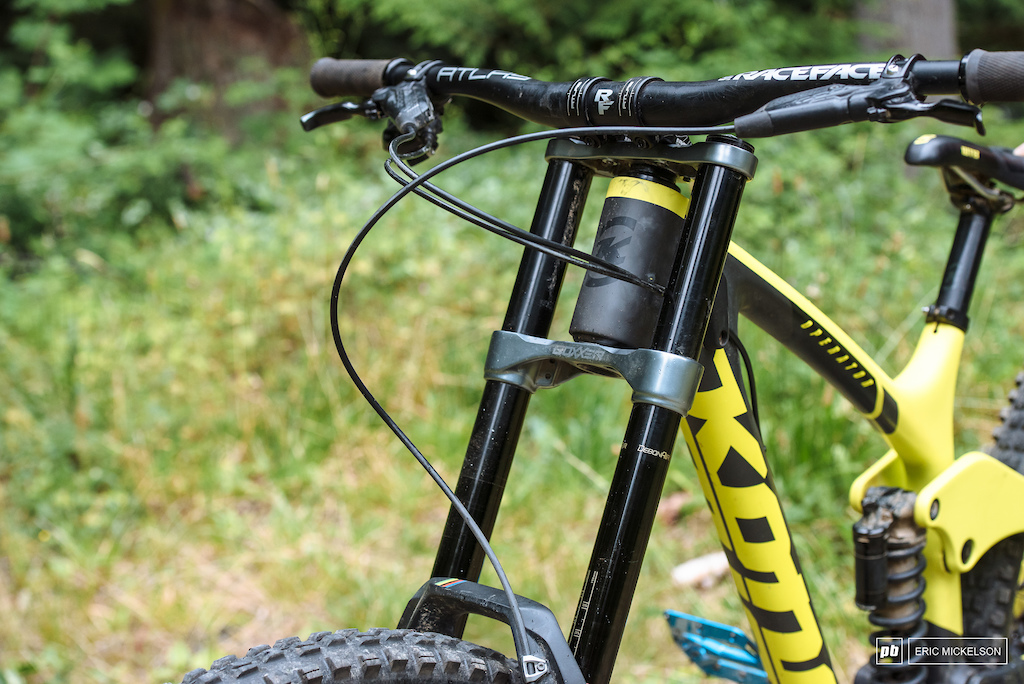
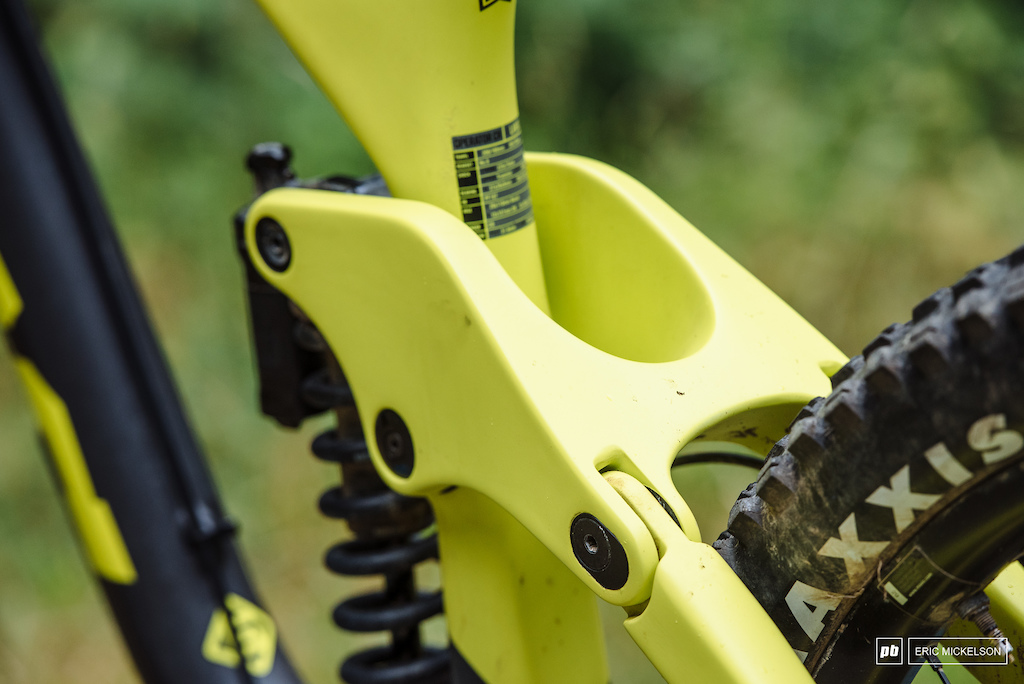


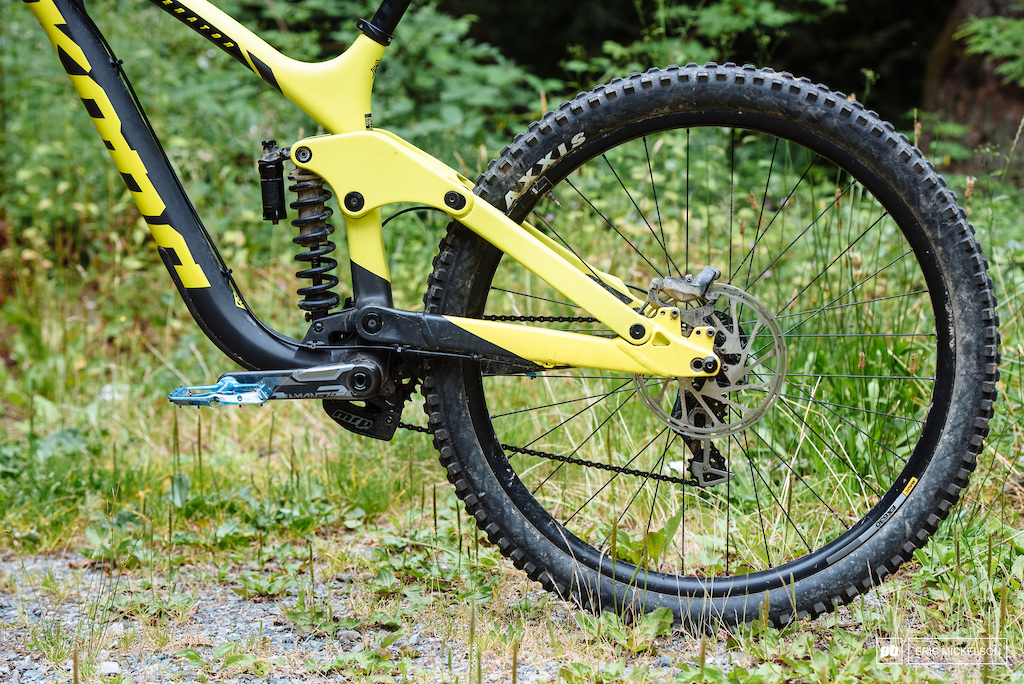
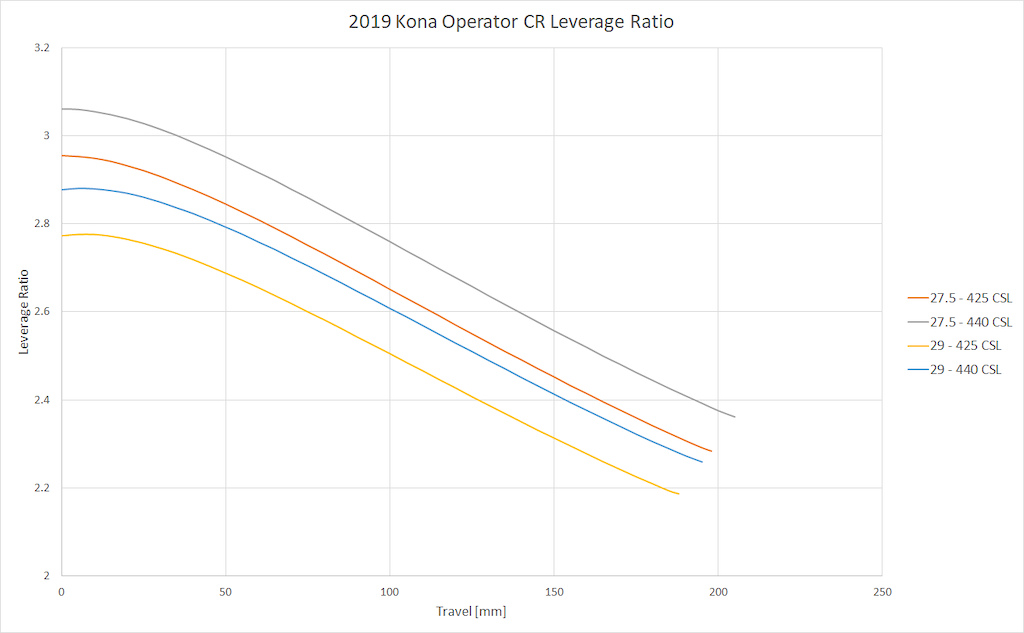
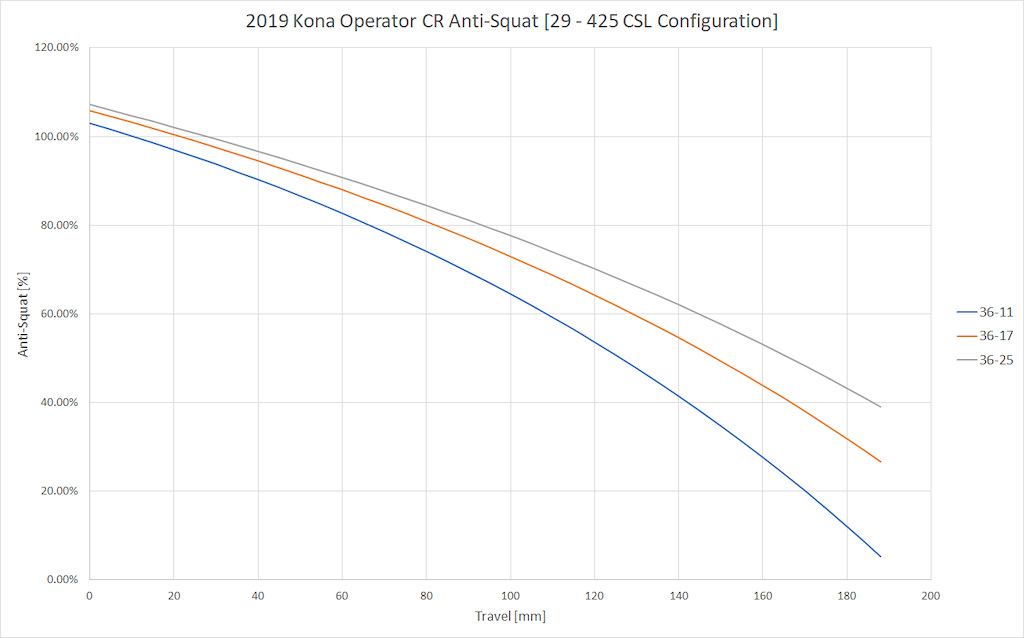


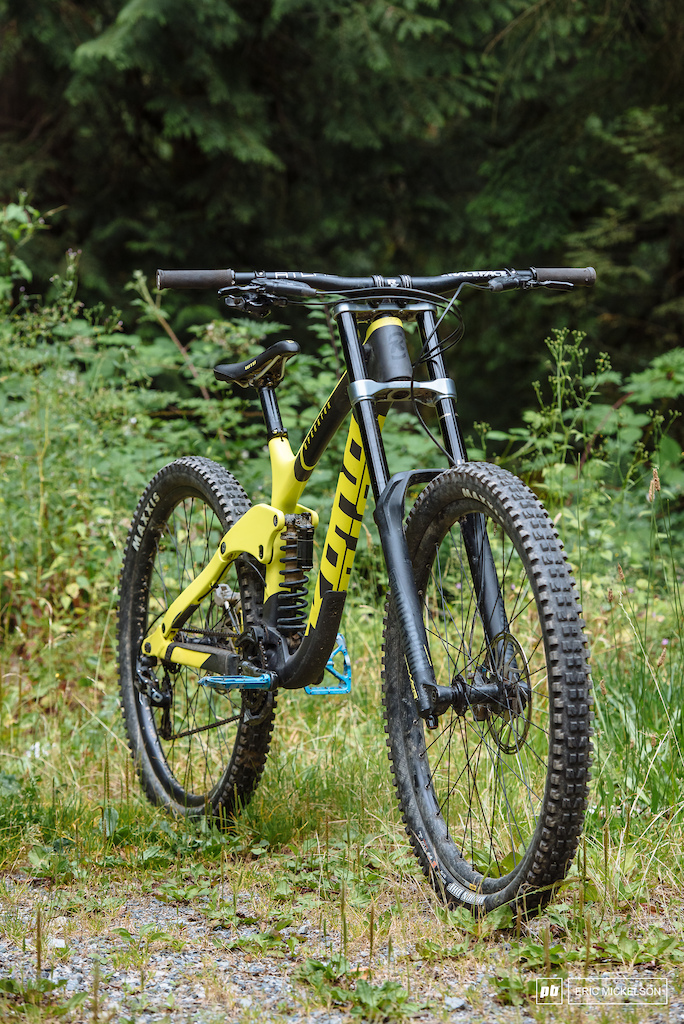
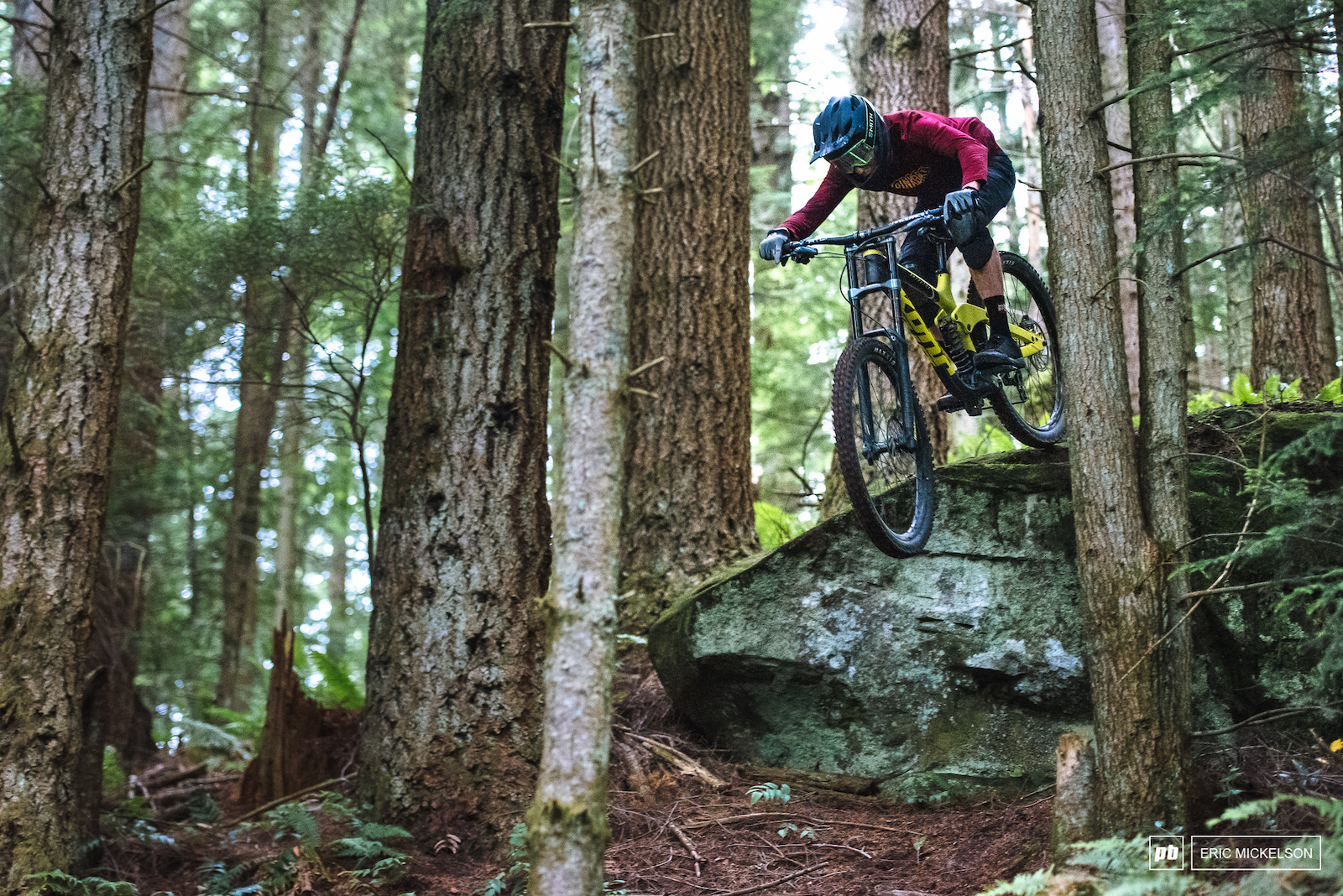

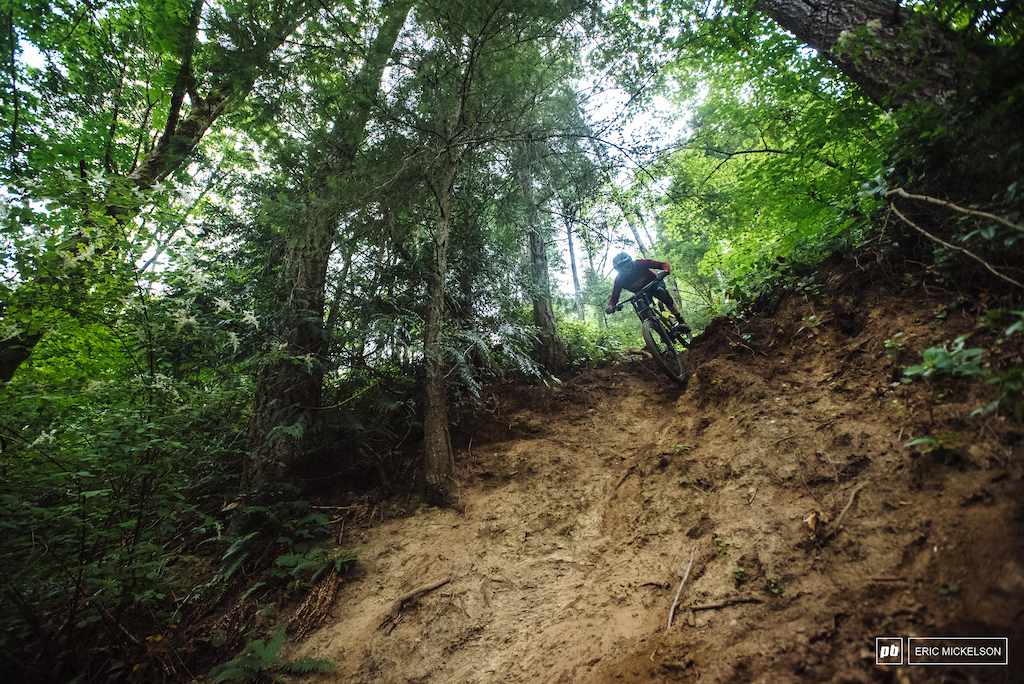

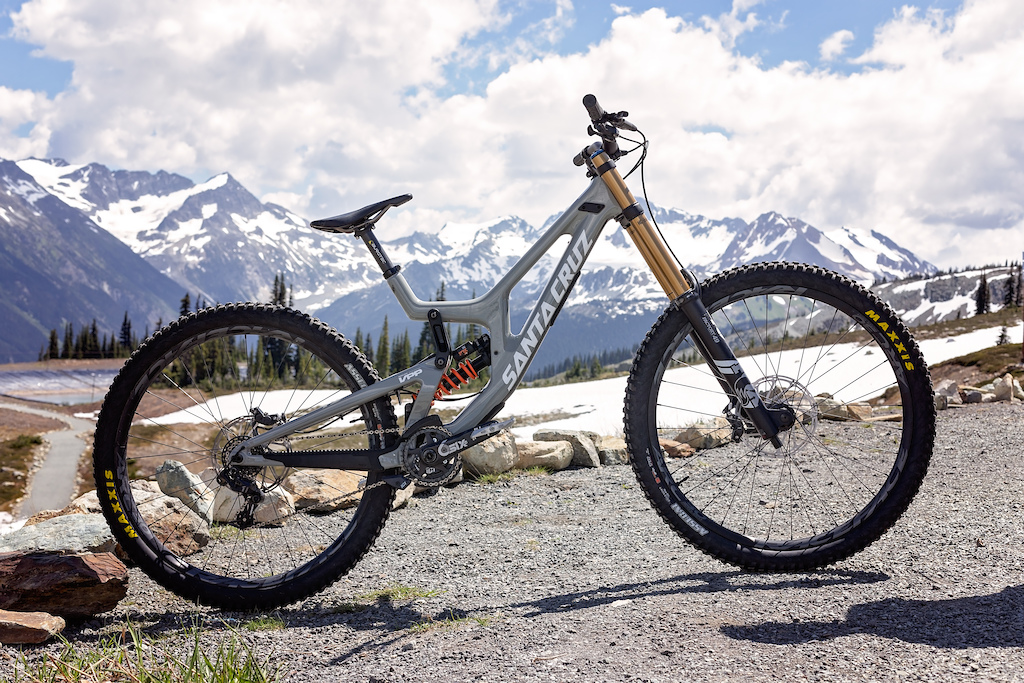

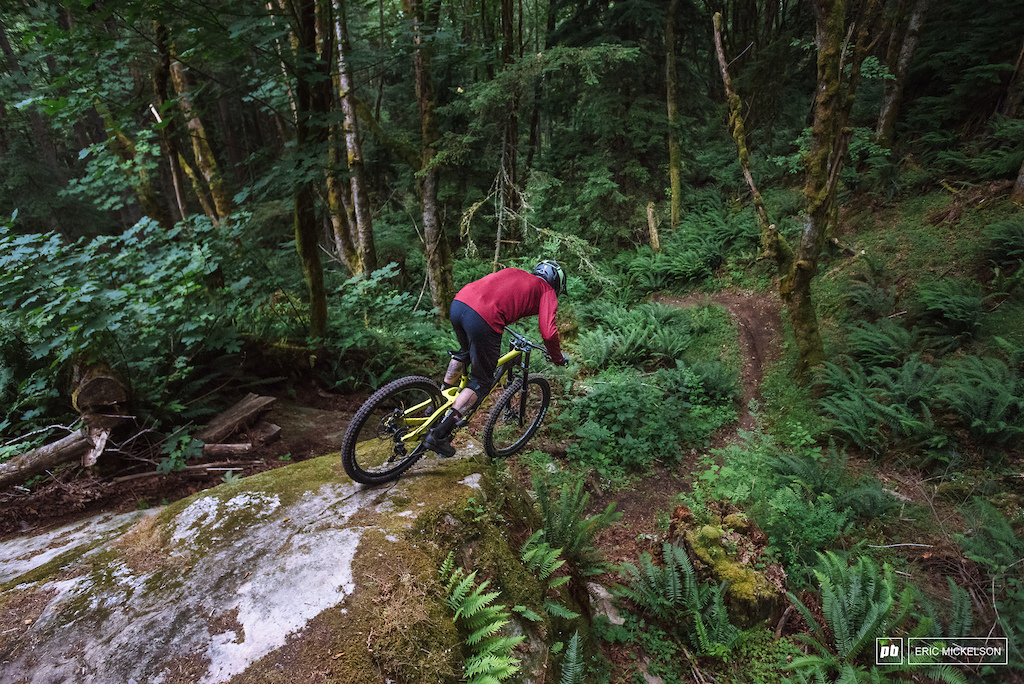
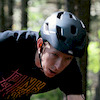
Please review a mid 2000's Stinky, Bighit, Faith or similar so we can see if bikes have really come that far or if we're just old.
Yep I totally agree
www.pinkbike.com/u/Bomadics/album/2003-Stinky-Deluxe
www.pinkbike.com/u/pinkbikeoriginals/blog/video-pinkbike-hot-lap-with-mike-levy.html
Im glad someone else has noted how wildly ball aches it can often be. Im no strava bandit but I do use it for running to push myself and it can give such variable distances and tracks. This of course is device related but the point is there when we are talking seconds. Then there is segments. I looked at a segment the other day on the road bike. Some one did it in a seemingly quick time. I drove up the long hill at the speed limit and it took longer. Its all nonsense!
I like the yellow.
Riding in a group a few weeks ago I noticed a similar thing with the devices too - my phone was recording about 2% more in distance and elevation than another rider's GPS. That's quite a significant difference over 15 miles!
Its never a good idea to use the Strava app to track a ride if you can use one of the GPS apps that just records waypoints, you turn off all the battery drain protections on the phone, turn off mobile data, bluetooth & wifi.
That way you can use an app that lets you capture the maximum # of waypoints and everything else about the phone isn't draining battery.
GPS watches like my Suunto don't allow you to pick the frequency specifically, they only let me pick "high accurary, medium or low". Luckily it had an update recently that allows you set a screen timeout when running an activity to reduce battery drain. It's pretty neat because when it's not running GPS, the screen is always on in a low light mode, but when on a bike ride I have it set to darken out and not display unless I touch the buttons. Added a lot of battery life back.
Don't make bikes out of necessity, make bikes that you believe in Kona.
Still love my 26er Gambler, but keep up the nice work Kona.
Thanks for reviewing a DH rig. Keep'm coming. As someone who's current DH bike is getting long in the tooth a new DH rig is on the menu within the next 2 years. Would like to see some comparisons between the 275 vs 29. Wonder if a rear 29" hoop can take the repeated beating real DH dishes out. Too bad DH is on "downward trend". Trail riding is still my favorite but DH is a close second. It hones the skills and importantly gives me my "vert" fix, meaning I can just go out on an old fashioned xc/trail ride on a lighter bike and not worry about missing the bigger features a bigger bike would require. Its really quite liberating.
Even with a 150 or 160 rear end bike... when you take a trip to a bike park, you could toss this on the front in 170 or 180. Also slacks it out... turning your enduro bike into a hero bike.
Then throw your single crown 160 or 170 back on when you get home for your local trails. Way cheaper than buying two bikes.
I like how you think
There are bikes that are bigger than regular enduro, although a few of the more dedicated 'mini-dh' bikes seem to have been discontinued so maybe they didn't sell that great - there's plenty like the Commencal Clash (180 front/165 rear), Canyon Torque (175 front/rear), Knolly Delirium (170-180front, 170rear), Pivot Firebird (170front/rear), (Commencal Supreme SX (discontinued - 180 front/rear), Scott Voltage FR (discontinued, 180front/170-190rear), YT Capra (170front/rear), Mondraker Dune (170front/160rear)...
You can get plenty of 'plough' on the upper end of the enduro spectrum at the moment. Honestly if you need more squish than what the big-boi enduros can do these days you probably just need a full-on DH bike. I don't think there's really much of a space in the market there, which is probably why things like the Scott Voltage got discontinued.
Also note the flip chip on the back of the rocker just behind the seatmast. You flip that chip which then raises the rear end back up a few millimeters to accomadate for the smaller wheel. Plus, the wheelbase wouldn't be that drastic of a change because you don't have to flip the chip at the rear axle if you want to leave the rear end long.
Wheel base doesn't change in that regard if you leave it in the longer setting and you leave the 29" fork on. Your wheels are bigger and therefore the bike is longer because the tires are "longer" front to back...but no wheelbase change.
If you live in Whis, you're there because you're currently focused on three things, shredding the shit out of the bike park 5 days a week in the summer, shredding the shit out of the mountains 5 days a week in the winter and shredding the shit out of the liquor stores in the evening. When you live like that, you have the best tools for the job - DH bike and park pass (and possibly a non-park bike for valley riding), a top of the line set of winter gear and mountain pass... and a top of the line drinking liver.
He should also keep an eye out for rentals... lots of tourists don't fly with their bikes and rent a DH for their trip while not actually owning one. Which for most people is much cheaper than owning two bikes. Buy a good 140/160 trail bike for everyday riding and rent a DH for your couple of park trips a year.
This...I'm assuming it makes it pretty damn low. My understanding has always been that you can get away with switching between 27.5 Plus and 29, but I'd assume going from 29 to a straight 27.5 would drop things over 0.5", which is pretty significant IMO.
On a DH bike, when you get into rough stuff where the rider can't pump and keep the bike moving forward, the faux bar bikes hang up and can quite literally slow you down.
The first DW-link bike I rode & all the FSR bikes I've had remind me constantly of how much more they help with momentum in rough stuff.
I was reminded again last weekend when I got to demo a Mondraker Foxy. As I moved uphill over rooty stuff or rode and/or sprinted downhill, the axle path & linkage kept the bike from deflecting. It was on really rooty & rocky stuff and gave the sensation of "accelerating and gaining momentum".
I know the Commencal has that idler to get rid of some of the hang up from that sensation at the pedals, but all the linkage bikes have an advantage. Makes you realize just how truly badass Pierron and Fearon are for being able to get those basic platforms down the mountain the way they do.
Would love to see someone tap into Connor Fearon's true potential and finally put him on a bike with a suspension platform that won't hold him back.
No one find it ironic that Sam Hill races enduro and dominates on an FSR but would be forced to ride a single pivot for World Cup DH? I know I'd never want to try to adapt my riding if on flats between those 2. The difference for a flat pedal rider is huge.
Brook McDonald suffered on that stupid iDrive platform too.
i think it would be even better if in addition to your setup you could list the settings the manufacturere recommends for the specific bike model. if you'd do it in a consisten way over all bike tests, that would be the icing.
another suggestion - how about listing clicks for suspension setup with +NUMBER beeing from fully open and -NUMBER from fully closed? if we could all agree on that suspension settings would be so much easier to read.
Seems made for it.
I mentioned it in another comment, but I didn't have any issues with cornering or tire buzz, so didn't see any reason to go that route. It could be a good option for shorter riders, though.
f*ck Normie's and sheeple.
Looking at buying a V10 this week. Anything I should look out for?
Those are huge, larger than Stamp Large for instance.
Now back to writing barely intelligible emails.
Cut the guy some slack dude!
Great article btw, I have been a big fan of Kona bikes for years and have been very curious about the new Operator. Thank you for the review!
I need all adjustability possible so I can try and see what fits me better. CS length and BB height are easy to implement and would mean minimal increase in production costs. For people like you companies could make a setting recomandation and you can stick to that if you don't like options.
There's going to be some mullet hype for the next season or two as companies try to glom onto another trend, but my prediction is that it fades away relatively quickly.